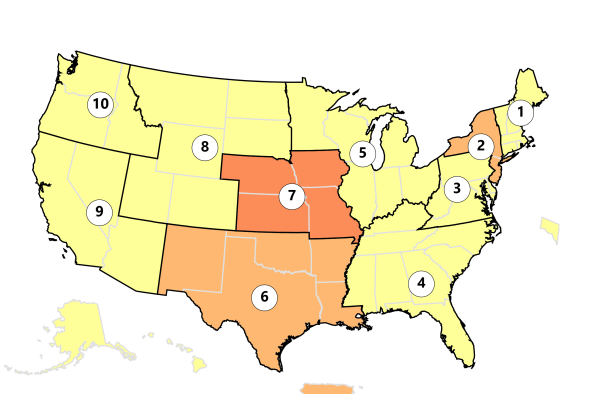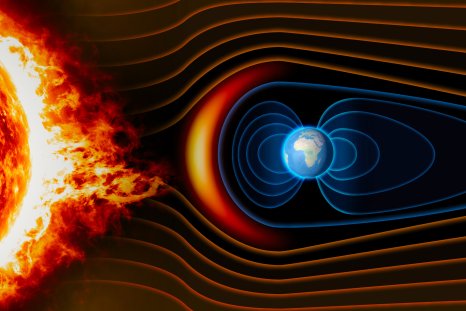Volcanoes that have laid dormant for millions of years could revolutionize the sourcing of important rare earth elements, a new study published in Geochemical Perspectives Letters suggests.
Researchers have found that a mysterious type of iron-rich magma found within extinct volcanoes may be a rich source of these highly sought-after metals.
Rare earth elements, crucial components in modern technology ranging from smartphones and flat-screen TVs to electric vehicles and wind turbines, are becoming increasingly important as the world shifts toward renewable energy solutions. With demand expected to quintuple by 2030, finding new sources of these elements is more critical than ever.
Michael Anenburg from Australian National University, one of the study's authors, explained that the iron-rich magma found in some extinct volcanoes is remarkably efficient at concentrating rare earth metals.
"We have never seen an iron-rich magma erupt from an active volcano, but we know some extinct volcanoes, which are millions of years old, had this enigmatic type of eruption," he said in a statement.
Extinct volcanoes have not erupted in human history and will probably not do so again. An example in the United States is Mount Thielsen in Oregon. This mountain, located in the High Cascades near Mount Bailey, last erupted 300,000 years ago and has no volcanic activity beneath it anymore, according to the United States Geological Survey.
Other volcanoes like Yellowstone Supervolcano could be considered extinct—it last erupted some 70,000 years ago—but scientists know it has magma beneath it, making a future eruption possible.
However, not all extinct volcanoes are comprised of iron-rich magma. "This isn't just any extinct volcano, but specifically iron-rich extinct volcanoes," Anenburg told Newsweek.
The researchers found that the solidified magma that forms this type of extinct volcano is up to a hundred times more efficient at concentrating rare earth metals than the magma that commonly erupts from today's active volcanoes.
To make the discovery, the team simulated volcanic eruptions in laboratory conditions, using rocks similar to those found in iron-rich extinct volcanoes. By melting these rocks in a pressurized furnace at extremely high temperatures, they could study the minerals within and unveil the abundance of rare earth elements.
"We discovered that, yes, those magmas should be enriched in rare earths. Whether this translates to actual abundance in practice should be tested on a case-by-case basis. Now that we know that iron-rich volcanoes should be rare earth-rich, now is a good time to target them for exploration," Anenburg said.
Rare earth elements are not as scarce as their name suggests—they're found at low concentrations in most massive rock formations and on the ocean floor. However, finding sources with sufficient concentrations of rare earths to make mining and extraction economically feasible is a significant challenge.
Anenburg added, "Just finding rare earths isn't enough—you need to have enough of them, you need to have them in the correct minerals, and ideally in a place where mining is feasible. Middle of the desert, good, sensitive rainforest not so much."
The researchers believe these new findings could potentially overcome some of these hurdles.
"Our findings suggest that these iron-rich extinct volcanoes across the globe, such as El Laco in Chile, could be studied for the presence of rare earth elements," Anenburg said.
"But I would say that every one of the iron-rich volcanoes deserves a look, remembering the usual risk in mineral exploration that only a handful of all discoveries actually end up as a profitable operating mine."
According to the European Commission, China currently has a "quasi-monopoly" on rare earths, which is of significant concern for global supply chains. In 2010, China slashed worldwide exports of rare earths and entirely cut off Japan to pressure its government to release a detained Chinese fishing trawler captain.
Based on the new findings, the hope is that other nations can become major players in rare earths space, preventing such bottlenecks in the future.
Do you have a tip on a science story that Newsweek should be covering? Do you have a question about volcanoes? Let us know via science@newsweek.com.
References
Yan, S. C., Wan, B., Anenburg, M., Mavrogenes, J. (2024). Silicate and iron phosphate melt immiscibility promotes REE enrichment. Geochemical Perspectives Letters, 32–1, 1–7. https://doi.org/10.7185/geochemlet.2436
Disclaimer: The copyright of this article belongs to the original author. Reposting this article is solely for the purpose of information dissemination and does not constitute any investment advice. If there is any infringement, please contact us immediately. We will make corrections or deletions as necessary. Thank you.



